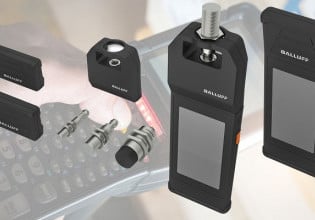An Introduction to Gas Leakage Detection Systems
Learn about the requirements and importance of a gas leakage detection system.
Gas leakage detection systems are an integral part of a safety system, providing the first line of defense against the possible disasters of gas leakage. It detects the gas leakage and triggers an alert system to activate safety precautions. Some leakages are too small to be smelled or are of an unscented gas, so it’s a necessary investment to install a gas leakage detection system.

Figure 1. Gas leakage detection systems protect personnel and the environment from potentially hazardous exposure to gases.
The use of gas in both industrial and residential environments is ever-increasing. Gas is mainly used for energy generation and as a process requirement in manufacturing industries. The aftermath of a gas leak can be devastating irrespective of the scale of leakage.
Considerations for a Gas Detection System
There is a diverse portfolio of gas detection systems available in the market, but it is paramount to know what particular detection system fulfills the requirement. Things to consider during Gas detection selection are gas detection, detector location, the flow of gas, and alarm management.
Type of Detection Required
Which gas detection is required? Are the gases toxic or volatile organic compounds (VOC)? A detector for one gas cannot detect other gases. So during system design, the type of gas is the first information a designer requires.
Location
Location plays a vital role in the performance of gas detection system. Specifications of sensor for indoor application are different than for outdoor location. Similarly sensor’s location is dependent on target gas. If the target gas is heavier than air such as Butane and Sulfur Di Oxide, then the detector must be installed at lower level. If the target gas is lighter than air, then the detector must be installed at higher levels.
Flow of Gas
The flow of gas should be sufficient enough to for the sensor to detect the gas. The target gas should accumulate in detectable quantity. Gas passing through the detector element at a high speed makes it difficult for the detector to detect leakages.
Alarm Management
What should personnel do when gas is detected and what actions are required? An alarm management system represents the series of actions a system performs in an event of gas leakage.
Alarm management could be as simple as warning indicators such as lights or an auditory alarm. Advanced systems could include alerting safety systems and personnel through predictive maintenance programs and CMMS. Automatic shutdown of the factory’s operation and initialization of emergency systems can be included. This depends on the nature of possible hazards and the severity of possible damage.
Calibrating Gas Detectors
Gas detectors must be calibrated regularly, to truly reflect the original concentration of gas. During operation, the detector’s exposure to different gases reduces efficiency for detecting a gas. Severe environmental conditions such as high temperature and humidity degrade the detector’s working as time passes.
During calibration, it is recommended to follow the manufacturer’s guidelines about the procedure and the frequency. If the detector’s use is high, then the frequency can be changed to that of the manufacturer's recommendation. In addition to the calibration, bump tests are also performed. In a bump test, the detector is exposed to the concentration of known gas and value. The readings and respective alarm systems are analyzed to ensure proper operation.
Precautions for Measuring Corrosive Gases
Different gas detectors work for different gases: non-corrosive, corrosive, flammable, and toxic gases all have specific characteristics. Exposure to these gases makes the detector vulnerable to different defects. The corrosive nature of these gases lessens the detector’s performance and life.
To use leakage detectors for corrosive gases, certain precautions are necessary. These precautions increase detector life and make the output trustworthy.
Calibration
The use of a detector in corrosive environments drags the output away from calibrating settings. The readings do not represent the actual gas concentration for which the detector is designed, manufactured, and purchased.
Calibrating the gas detector ensures the detector’s reading is in accordance with the reference points. For calibration, manufacturer recommendations and procedures should be followed. The manufacturer also provides recommendations for the frequency. But in the case of frequent use and application, the user can set their own calibration frequency.
Ingress Protection (IP) Rating
Look for the ingress protection (IP) rating for a gas detector. IP ratings establish procedures for the protection of electrical and electronic devices from the intrusion of unwanted dust, vapors, and moisture. The specific ratings give information about how well a device protects itself from the different intruders.
To use gas detectors for corrosive substances, detectors are recommended to have an IP rating of 66 or 67.
IP 66 means it protects the detector from tight dust and powerful jets of water. IP 67 means the device has protection from tight dust and harmful water effects when immersed in a depth of about 1m.
Corrosive Resistant Materials
The material of construction is an important factor in nullifying corrosive effects. Some materials feature excellent resistance to corrosive effects. So it helps to look out for these materials when selecting and purchasing the leakage detector system
Non-Corrosive Gases
For non-corrosive gases, requirements are less stringent than corrosive gases. Typically, a gas detector with an IP rating of 54 is sufficient for a safe and error-free detector operation.
An example of non-corrosive gas is oxygen. The oxygen levels are monitored for detecting a deficiency of oxygen to avoid human fatalities such as in mines and large storage vessels.






